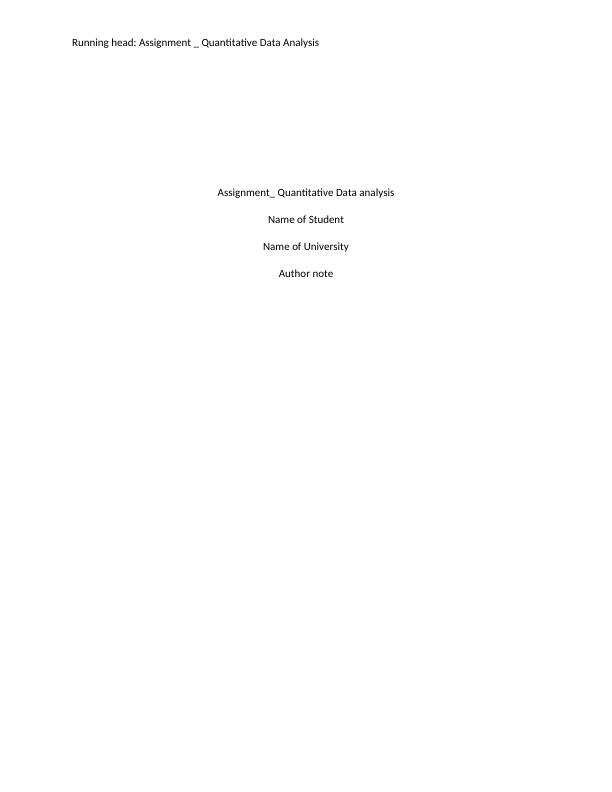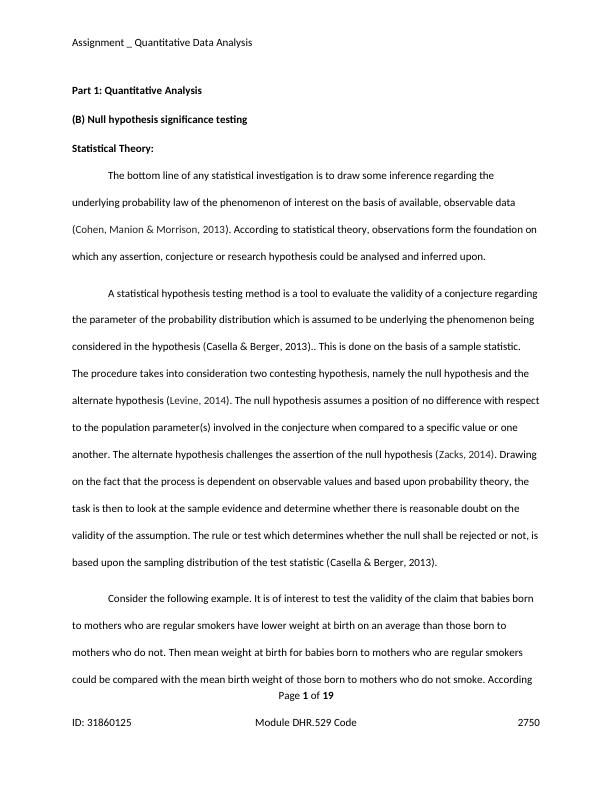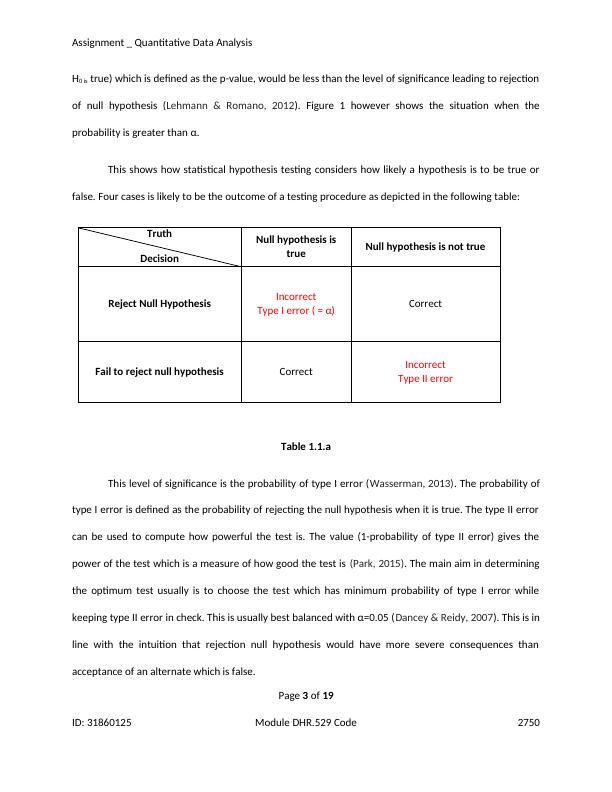Ask a question from expert
Assignment on Quantitative Data Analysis
Present analysis of qualitative data findings and critically discuss challenges of analyzing qualitative data and producing rigorous findings.
18 Pages3759 Words381 Views
Added on 2021-04-17
Assignment on Quantitative Data Analysis
Present analysis of qualitative data findings and critically discuss challenges of analyzing qualitative data and producing rigorous findings.
Added on 2021-04-17
BookmarkShareRelated Documents
End of preview
Want to access all the pages? Upload your documents or become a member.
Financial Statistics | Assignment
|4
|662
|32
A Guide to Statistical Inference Question Answer 2022
|18
|4061
|28
Understanding Null Hypothesis, Alternative Hypothesis, Type I and Type II Errors in Statistics
|12
|1692
|79
Pearson Linear Correlation Test: Assumptions and Key Concepts
|4
|664
|141
Data Analysis | Assignment-1
|8
|1466
|10
Data Analysis for Smoking Growth Rate using AUTOS and FTND Methods
|6
|1048
|210



